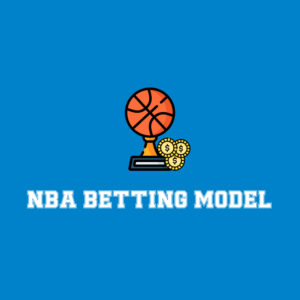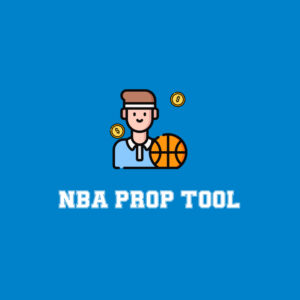
It’s that time of year again. Training camps have officially wrapped. 53-man rosters are (mostly) set. Now is the perfect time to draft your fantasy teams. The knowns are known, there are no more surprise preseason injuries to be had, and most starters can be sussed out by this point. All the information is available to you. There’s always a way to find an edge, though. Someone is always lurking right underneath the public’s nose. No wonder they are called “sleepers,” the whole public’s sleeping on them!
The issue with the generic fantasy sleeper articles is that they are, for the most part, one-size-fits-all. Beyond the scoring format, there is no uniform way to identify sleepers. How deep do you have to go? Some articles will call a top-40 wide receiver a sleeper. Others cite UDFA standouts who barely crack a roster. A sleeper in an 8-man league is very different from a 12-man league sleeper. Get any bigger than that, and most “diamonds in the rough” are gone by the 10th round.
For lack of a better term, how hard are people sleeping on these players?
This article serves to be a one-stop-shop for leagues of all sizes. Using Underdog ADP in half-point PPR leagues, through the FTN ADP comparison tool, there are sleepers for even the most shrewd fantasy owners. Whether you’re mulling late-round decisions or are already scouring the free agent market, there is a player for you on this list.
Light Snooze (ADP < 100)
Rashod Bateman, WR, Baltimore Ravens (ADP 98.3)
Oh, what to make of the Ravens wide receiver room? Lamar Jackson’s 2023 re-signing came alongside a complete overhaul of the Baltimore offense, complete with a new offensive coordinator and a slew of new weapons. With excitement brewing over rookie Zay Flowers and veteran acquisition Odell Beckham Jr., everybody is forgetting about the incumbent: third-year receiver Rashod Bateman.
Bateman has played just 18 games in two years and underwent season-ending Lisfranc surgery in 2022. However, at his best, Bateman has the skills necessary to be Baltimore’s WR1. Bateman has a size and frame that Beckham and Flowers both lack. He also boasts legitimate separation speed: Bateman finished with a third-best 8.9 YAC per reception in 2022 among receivers with at least 15 catches, per Stathead. While that number gets inflated by Bateman’s 55- and 75-yard touchdowns, he was Jackson’s primary deep threat when healthy. Bateman led Baltimore with a 13.4 ADOT when available. A team’s starting X receiver with that kind of upside should not also be the team’s fourth pass-catcher off the board. The injury concerns are real, but this is the best value to get in on one of the offseason’s most intriguing offenses.
Antonio Gibson, RB, Washington Commanders (ADP 99.3)
Antonio Gibson has struggled to replicate his breakout rookie season. Last year was arguably his worst yet, falling out of favor after a three-rush, six-yard performance in Week 5. While he maintained a regular workload as an RB2, a Week 12 pedal foot injury slowed Gibson down before a Week 16 MCL sprain knocked him out the last two weeks. In his place, rookie Brian Robinson had an up-and-down season. It wasn’t a performance that should preclude new offensive coordinator Eric Bieniemy from returning to Gibson.
In fact, expect to see a lot more from Gibson. The departure of J.D. McKissic means that Washington needs a go-to passing down back. That role is almost certainly going to Gibson over Robinson. Gibson finished the 2022 season with 89 receiving DYAR, seventh among running backs in 2022. In fact, most of the talk around Gibson this offseason has been as a passing down back. Head coach Ron Rivera has referenced Gibson’s former days as a college wide receiver. Gibson himself even expressed interest in lining up out wide: “I haven’t shown my position… Every year we talk about it, but it hasn’t happened.” With Bieniemy bringing some of the Chiefs creativity to Washington, this could be an opportunity for Gibson to shine.
A Good Eight Hours (ADP 100-149)
Geno Smith, QB, Seattle Seahawks (ADP 117.1)
There is some understandable hesitation around drafting the 2022 Comeback Player of the Year. Despite finishing fifth among quarterbacks in fantasy points last season, Geno Smith’s 2022 season was a major surprise. This was Smith’s first season as a full-time starter since 2014; Smith’s production also came back to Earth after five red-hot weeks. But there is reassurance that the top-five performance wasn’t a fluke. Research by NFELO shows that completion percentage over expectation (CPOE) is a consistent advanced metric year-to-year. Smith’s 4.4% CPOE last year led the league among quarterbacks who started at least half the season. A highly accurate quarterback who frequently throws downfield and is willing to tuck the ball should be more highly coveted.
Smith also gets another year in Seattle’s system with even more help around him. Seattle added Jaxon Smith-Njigba in the draft to create what could potentially be one of the league’s best receiving trios. Couple that with another year in the system and a slightly improved offensive line, and Smith is set for a 2023 repeat. Smith is currently being drafted as QB15 in most leagues, leading up a tier of question-mark quarterbacks like Daniel Jones (ADP 114), Jared Goff (ADP 119), and Russell Wilson (134). Smith arguably has the best supporting cast and the highest floor of the quarterbacks in this tier, with a ceiling to compete for another top-five finish.
Dalton Kincaid, TE, Buffalo Bills (ADP 117.3)
The Buffalo Bills were the third-most successful team in the league out of 12 personnel, posting a 26.2% offensive DVOA out of the grouping. They also ran the least 12 personnel in the league, trotting it out on just 4% of snaps. That should change in 2022. Buffalo’s first-round tight end Dalton Kincaid is a legit receiving threat. During his 2022 season at Utah, Kincaid was the only tight end in the country to be targeted more than 10 times on passes of 20+ air yards. Josh Allen threw 82 such passes in 2022, tied for the second most attempts in the league.
Kincaid has already managed to flash some of his ability as a route runner during preseason. He isn’t the best blocker, but the Bills have never had a pure flex tight end for Josh Allen. Buffalo does have an incumbent veteran tight end Dawson Knox, who just secured a big extension last season, so there is risk in playing time. However, the non-Diggs targets don’t feel completely certain at this stage. Kincaid’s skillset as a big-bodied route runner with an ability to threat vertically is perfect for Ken Dorsey’s offense. Kincaid has incredible offensive potential and can be an immediate impact player for the Bills. This could be the cheapest way to get in on one of the league’s best offenses, and the sky is the limit for Kincaid’s potential.
Samaje Perine, RB, Denver Broncos (ADP 118.6)
Samaje Perine is more than a simple handcuff alongside Javonte Williams, but rather an insurance pick in spite of Williams. In 2022, Matthew Betz of Fantasy Footballers examined the impact of ACL tears on fantasy-relevant running backs. Betz discovered that backs who tore their ACL between 2015 and 2020 had a drop of 1.2 yards per carry in the immediate following season compared to their career average. Looking at career yards per touch, running backs lose an average of 1.36 yards in their first season back. Perine becomes the perfect plug-in back if Javonte Williams is not 100%. In 2022, Perine more than doubled Joe Mixon’s rushing DVOA (14.7% to 6.1%) on just under half the carries (95 to 210) with a matching success rate (54%).
Even if Williams is healthy enough to take the brunt of the rushing workload, Perine will still be an important piece of Denver’s passing attack. Sean Payton has already flashed his love for running backs in the pass game this preseason. In Williams’ first preseason game back, he saw more targets (5) than rushing attempts (3). From 2013 to 2021, Payton’s Saints gave running backs a target share of at least 20% each season, breaking a 25% target share in five of those nine seasons. Perine saw a career-high involvement in the passing game last season. His 51 targets were sixth on Cincinnati in 2022, while his four receiving touchdowns were tied for fifth-most among all running backs.
Marquez Valdes-Scantling, WR, Kansas City Chiefs (ADP 144.7)
The Kansas City Chiefs are in a similar position to the Baltimore Ravens fantasy-wise: drafters want in on the hyper-exciting offense, but the ADP reflects everyone’s uncertainty on how to do so. Beyond Kelce and Mahomes, Chiefs receivers are going anywhere from 114 (Kadarius Toney) to 266 (Richie James). The Chiefs receiving corps is in a state of change; with JuJu Smith-Schuster and Mecole Hardman moving on, there are 172 targets freed up to split between the new blood. The most consistent piece on this team is arguably the one getting the least love in fantasy drafts: Marquez Valdes-Scantling.
Valdes-Scantling is, admittedly, a one-dimensional receiver. He’s almost exclusively a go ball receiver. In 2022, Valdes-Scantling posted a 50.8% DVOA on passes 16+ yards downfield (22nd) and -24.6% DVOA on all passes shorter than that (10th-worst in the league). We know that, and the Chiefs certainly know that. That didn’t stop Kansas City from giving him 81 targets, third-most on the team in 2022. Valdes-Scantling was fifth in ADOT among receivers with at least 50 targets last year. He understandably has a lower catch rate because of the emphasis on the deep ball (he hauled in 42 of 81 targets for 687 yards and a pair of touchdowns), but Valdes-Scantling has a clear role carved out on the Chiefs. This is the cheapest way to get in on Kansas City’s offense while still guaranteeing a workload. He’s a much better best ball play, but another year working with Patrick Mahomes could up his floor in season-long play.
Jordan Love, QB, Green Bay Packers (ADP 148.2)
We are officially in a post-Aaron-Rodgers world in Green Bay. After the preseason Jordan Love had, Packers fans must be pretty comfortable with that reality. The clips out of training camp were already good. Then Love came out and finished his preseason appearances 21-for-22 with three touchdowns and no interceptions. It is premature to say that Love will be Green Bay’s third straight franchise quarterback, but the highlights Love has put on definitely show that he belongs.
Love will get all the help he can get entering his first year as full-time starter. Matt LaFleur already runs an incredibly quarterback-friendly scheme. The play-action- and RPO-heavy, motion-centric offense may not have been Rodgers’ cup of tea, but it will definitely make Love’s job easier by keeping defenses guessing and creating space for receivers. Moreover, Green Bay picked up a pair of tight ends and a wide receiver in the draft, giving Love even more weapons to work with. The Packers are an unproven unit, but Love has already flashed some impressive arm talent. At this low of an ADP, Love is one of the highest-ceiling quarterbacks available.
Melatonin (ADP 150-199)
Jalin Hyatt, WR, New York Giants (ADP 158.8)
This is less a bet on the rookie out of Tennessee and more a bet on Brian Daboll and Mike Kafka’s offense. Daboll weathered a litany of pass-catcher injuries and managed to turn an inexperienced receiver group into the 10th-best passing offense in the NFL. Daboll’s scheme did most of the work for the Giants’ wide receivers, employing frequent crossing routes to open up space for receivers. If there’s one thing Jalin Hyatt doesn’t need help with, it’s creating space.
Hyatt is a super speedster and solid route-runner. His biggest weaknesses as a draft prospect–his slender frame, his inability to win contested catches–are all shrouded in the Daboll/Kafka scheme. Last year, that scheme helped set up career years for Isaiah Hodgins and Richie James and propelled Darius Slayton and Wan’Dale Robinson into top-20 DVOA seasons. Hyatt’s ability to separate could transform his usage in this offense, giving New York someone who can both work over the middle on crossers and take the top off a defense. The Giants’ pass-catching room is relatively crowded, but Hyatt showed enough in preseason to warrant some excitement.
Jake Ferguson, TE, Dallas Cowboys (ADP 161.4)
It shouldn’t just come down to “it’s a Dallas tight end,” but come on. It’s a Dallas tight end. Dallas’s offense relies heavy on tight ends. Tight ends occupied a target share of at least 20% in Dallas’ offense three of the last four years. Yet Dallas was more than willing to let Dalton Schultz walk in free agency, even after finishing second in targets the last two seasons. The tight end room is a bit more crowded in recent years after drafting Luke Schoonmaker in the second round, but right now, the job belongs to second-year Jake Ferguson.
Ferguson already has a role in Dallas’s offense, albeit in limited usage. Playing 37% of offensive snaps, Ferguson served mostly a blocking role, but he made the most of his receiving opportunities. He was targeted on 24% of his 91 routes and caught 19 of his 99 of his 22 targets. Ferguson could be the perfect fill-in for Dalton Schultz, especially in the red zone. Schultz is one of four tight ends with 10 or more red zone targets each of the last four years. Ferguson turned two of his three red zone targets into touchdowns.
Tyjae Spears, RB, Tennessee Titans (ADP 162.2)
There are two ways to look at a Tyjae Spears draft pick. Option 1: go with the ol’ Curse of 370. Derrick Henry is a workhorse back whose yolk is on the verge of snapping. After his Offensive Player of the Year season in 2020 (which featured 378 rushes), Henry suffered a broken foot after just eight weeks of play. His return in 2022 saw Henry post his lowest yards per rushing attempt (4.4) in a season with at least 10 starts while also setting career lows in rushing DVOA (-4.3%, 29th). His 2022 rushing total went down to 349, but an uptick in passing involvement brough Henry’s total touches up to 382. That takes Henry up to over 1,000 total touches since becoming a full-time starter. Tyjae Spears is a fresh set of legs who could take over in the event of an injury or a continued decline in play.
Option 2: Tyjae Spears is a much different back than Derrick Henry. He said it himself after Spears hurdled a Vikings defender during Tennessee’s second preseason game: “I know I can’t do nothing like that, but it’s great to have a changeup.” Spears can still serve as a perfect complimentary back to Henry, the explosive, agile counterpunch Tennessee has lacked. Spears is also a much more capable receiving back than Henry, catching 22 passes for 256 yards and a pair of touchdowns his final year at Tulane. Spears can still get plenty of playing time even if Henry remains the lead ball carrier.
Tank Dell, WR, Houston Texans (ADP 176.8)
After two years of spinning their tires, the Houston Texans are officially back to actually competing. With a clean sweep of changes at GM, head coach, and quarterback, this team is still in the nascent years of a rebuild. Just look at their wide receiver room. Nico Collins is a fine, young holdover from the previous regime. Robert Woods is a 31-year-old who has looked like a shell of himself since tearing his ACL. Noah Brown was Dallas’s third receiver in a shallow room that has only cleared 20 receptions once in his career. John Metchie III is returning after both beating cancer and suffering a torn ACL his last game in college. There is no reason rookie receiver Tank Dell can’t break into this group.
A bit of an oxymoron. Dell is an incredibly small receiver. There was concern around Dell’s five-foot-10, 165-pound frame. That’s for good reason: only two receivers smaller than Dell (Deven Thompkins and Tutu Atwell) saw at least 10 targets in 2022. That being said, Dell lit up the Texans’ preseason. In his first preseason appearance, Dell led the Texans in targets (8), receptions (5), and receiving yards (65). One drive saw backup quarterback Davis Mills target Dell on four of five dropbacks. Dell reeled in all four targets, capping it off with an acrobatic barely-in-bounds touchdown snag. Even with the big drive, some of Dell’s best reps ended up being the ones where he didn’t get the ball. Dell missed most of the rest of preseason, but his debut performance highlighted just how great of a route runner Dell can be. It may take time for him to see the field, but Dell has already proven he can manage a big workload.
Hibernation (ADP 200+)
Keaontay Ingram, RB, Arizona Cardinals (ADP 214.2)
Keaontay Ingram saw next to no work as a rookie on the 2022 Cardinals. He saw 31 total touches–27 rushing attempts and four receptions on five targets–across 12 games, unable to break through a rotating cast of characters. Ingram got stuck behind James Conner and Eno Benjamin and didn’t do enough with his touches to truly differentiate himself from the likes of Darrel Williams and Corey Clement.
Things are looking up for Ingram, though. The complete overhaul of the Arizona Cardinals coaching staff comes with a new offensive coordinator: former Cleveland Browns positional coach Drew Petzing. Petzing is a disciple of Norv Turner and Kevin Stefanski, bringing a heavy emphasis of inside-the-tackle runs, big personnel sets, and zone blocking schemes. That’s a system Ingram can excel at, and it’s the kind of offense James Conner struggles with. Conner has also never played a full season of games, missing anywhere from two to six games a season to injury. Ingram has solidified the RB2 role, and on a team with no real starting quarterback, that could mean a whole lot of rushing out the gate.
Kendrick Bourne, WR, New England Patriots (ADP 215.4)
Practically any Patriot not named Rhamondre Stevenson could have ended up on this list. After the disaster of a season “offensive” “coordinator” Matt Patricia put together, the 2023 New England Patriots offense officially has the stink on it. In an offense nigh-impossible to predict, take the player with the lowest risk and the highest relative upside: Kendrick Bourne.
Bourne has had two bizarre years as a New England Patriot. He joined the team in Belichick’s record-setting 2021 spending spree as the team’s third wide receiver. He ended up as a jack-of-all-trades in a career season, with 55 catches on 75 targets for 800 yards and five touchdowns and an additional 125 yards on 12 rushing attempts. His efforts were good enough to land him at WR29 in season-long fantasy leagues, leading all wide receivers in both receiving and rushing DVOA. Then in walks Patricia, who had no clue how to properly utilize Bourne, and he all but fell out of the rotation. Bourne saw his targets slashed, his rushing attempts cut in half with worse efficiency, and his snap count slipped considerably.
This year, Bourne is back in full force. Bill Belichick has sung his praises, calling him one of the stars of New England’s training camp. Compliments on packing on muscle, playing multiple positions, improved receiving–even praise for Bourne’s blocking–are good signs of the future. The fact that New England is currently rejecting all trade inquiries for Bourne shows there is a plan in place for him. With an actual offensive coordinator in Bill O’Brien at the helm, the creativity that made Bourne such a great player in 2021 should be back in play.
Sean Tucker, RB, Tampa Bay Buccaneers (ADP –)
The former Syracuse running back finished his collegiate career with third-most rushing yards in school history and the school’s single-season rushing record. However, doctors at the NFL combine discovered a previously undiagnosed heart condition, which caused Tucker to fall out of the draft entirely. Tucker has since beat that heart condition and has quickly ascended the Buccaneers’ running back ranks.
Competing in a room with Rachaad White, Chase Edmonds, and Ke’Shawn Vaughn, Tucker has leapfrogged the competition. He already surpassed Vaughn as a roster lock and has reportedly surpassed Edmonds as RB2. Ben Meyerson of Bucs Gameday reported that Tucker began splitting starting reps with Rachaad White in Buccaneers practice, albeit only for a handful of drives. However, the impact is definitely being noticed throughout the organization. In a recent piece by ESPN’s Jenna Laine, Tucker was described as “lively,” “the fastest guy in the room.” Offensive coordinator Dave Canales comped him to former Seahawks UDFA Thomas Rawls, while fellow rookie Trey Palmer dubbed Tucker “baby Nick Chubb.” For a team that finished with the league’s worst rushing offense in 2022, everything should be on the table. Tucker is worth the flier.





























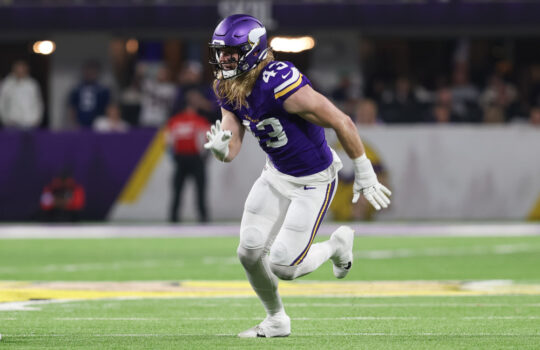



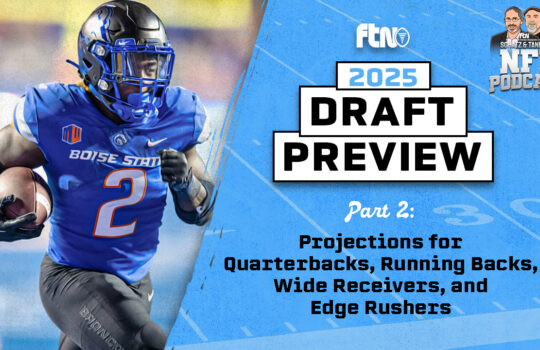

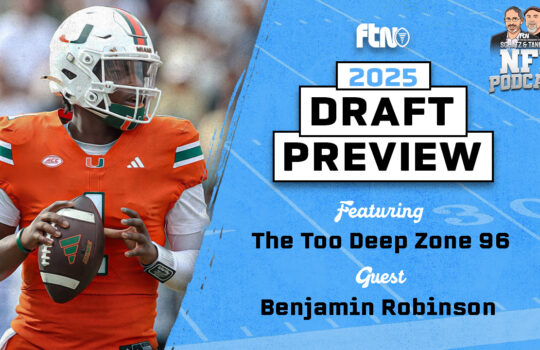





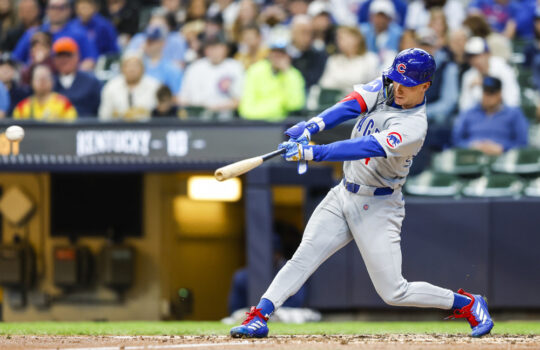



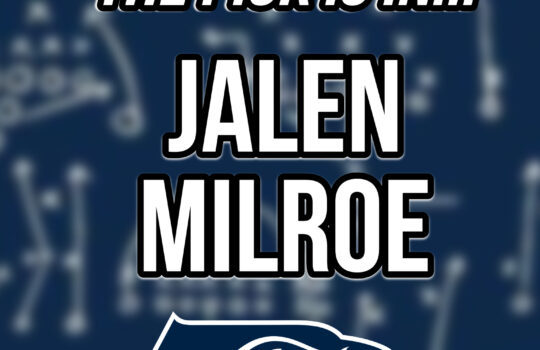

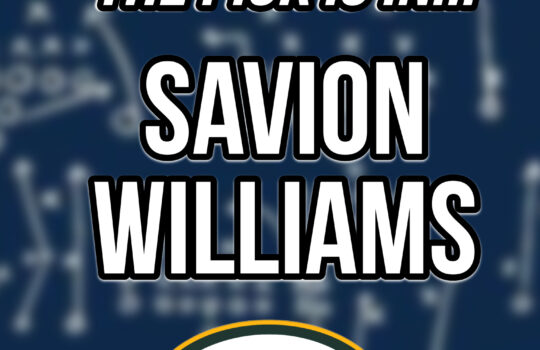
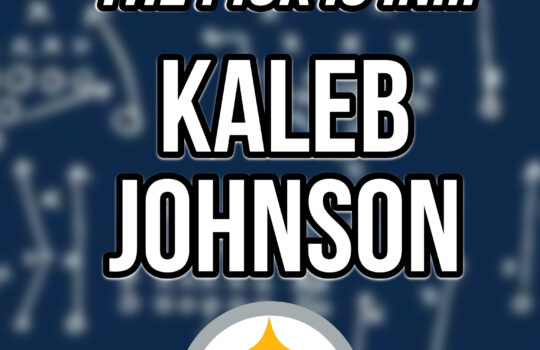

 New York Jets
New York Jets  New England Patriots
New England Patriots  Miami Dolphins
Miami Dolphins  Buffalo Bills
Buffalo Bills  Pittsburgh Steelers
Pittsburgh Steelers  Cleveland Browns
Cleveland Browns  Cincinnati Bengals
Cincinnati Bengals  Baltimore Ravens
Baltimore Ravens  Tennessee Titans
Tennessee Titans  Jacksonville Jaguars
Jacksonville Jaguars  Indianapolis Colts
Indianapolis Colts  Houston Texans
Houston Texans  Las Vegas Raiders
Las Vegas Raiders  Los Angeles Chargers
Los Angeles Chargers  Kansas City Chiefs
Kansas City Chiefs  Denver Broncos
Denver Broncos  Washington Commanders
Washington Commanders  Philadelphia Eagles
Philadelphia Eagles  New York Giants
New York Giants  Dallas Cowboys
Dallas Cowboys  Minnesota Vikings
Minnesota Vikings  Green Bay Packers
Green Bay Packers  Detroit Lions
Detroit Lions  Chicago Bears
Chicago Bears  Tampa Bay Buccaneers
Tampa Bay Buccaneers  New Orleans Saints
New Orleans Saints  Carolina Panthers
Carolina Panthers  Atlanta Falcons
Atlanta Falcons  San Francisco 49ers
San Francisco 49ers  Seattle Seahawks
Seattle Seahawks  Los Angeles Rams
Los Angeles Rams  Arizona Cardinals
Arizona Cardinals 
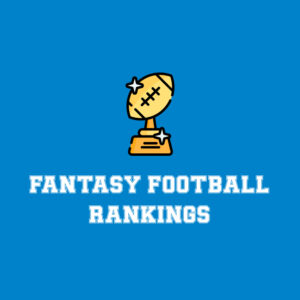
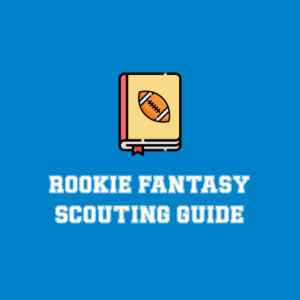






 Boston Celtics
Boston Celtics  Brooklyn Nets
Brooklyn Nets  Philadelphia 76ers
Philadelphia 76ers  New York Knicks
New York Knicks  Toronto Raptors
Toronto Raptors  Chicago Bulls
Chicago Bulls  Detroit Pistons
Detroit Pistons  Milwaukee Bucks
Milwaukee Bucks  Cleveland Cavaliers
Cleveland Cavaliers  Indiana Pacers
Indiana Pacers  Orlando Magic
Orlando Magic  Atlanta Hawks
Atlanta Hawks  Charlotte Hornets
Charlotte Hornets  Miami Heat
Miami Heat  Washington Wizards
Washington Wizards  Denver Nuggets
Denver Nuggets  Minnesota Timberwolves
Minnesota Timberwolves  Oklahoma City Thunder
Oklahoma City Thunder  Portland Trail Blazers
Portland Trail Blazers  Utah Jazz
Utah Jazz  LA Clippers
LA Clippers  Golden State Warriors
Golden State Warriors  Los Angeles Lakers
Los Angeles Lakers  Phoenix Suns
Phoenix Suns  Sacramento Kings
Sacramento Kings  Dallas Mavericks
Dallas Mavericks  Houston Rockets
Houston Rockets  Memphis Grizzlies
Memphis Grizzlies  New Orleans Pelicans
New Orleans Pelicans  San Antonio Spurs
San Antonio Spurs 
